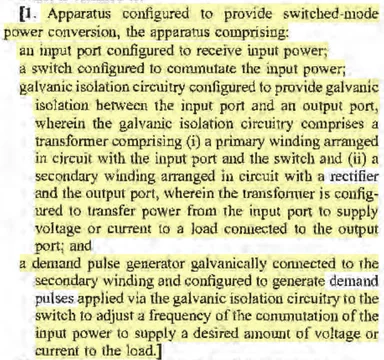Last Thursday, Judge Burke issued an R&R on SJ in a patent action. The patent involved software for playing back audio, and the claims included means-plus-function claim elements where an action is triggered either by a single "Back" command or by two consecutive "Back" commands.
Defendant argued that the patent failed to disclose corresponding structure showing how to calculate whether the two button presses were "consecutive"—i.e., how to measure the time between clicks. Judge Burke agreed that the patent failed to disclose such a structure:
As an initial matter, the Court disagrees with Plaintiff that these limitations "do not recite any functional requirement to measure time[.]" . . . As Defendant notes, . . . in order to be able to determine if two "Back" commands are "consecutive" (as opposed to simply being two single "Back" commands), a structure would have to be able to determine if the two commands are sufficiently close in time (i.e., what the parties have described as being able to determine whether the second command occurs within a "predetermined amount of time"). Indeed, both in its briefing here, and in earlier submissions, Plaintiff has implicitly or explicitly acknowledged that this is so.
Judge Burke denied the motion, holding that defendant had failed to offer expert testimony or other sufficient evidence to disprove the plaintiff's allegation that no algorithm is required, because this is something any computer could do:
However, on the question of whether summary judgment of indefiniteness should be granted, the Court must side with Plaintiff and say "no." Defendant has the burden to prove indefiniteness by clear and convincing evidence. . . . Here, Plaintiff asserts, citing to the report of its expert, Dr. Almeroth, that: (1) the function of reading and determining how long an audio player has played is something that could have been accomplished by a general purpose computer, i.e., a general purpose computer running Windows 95; and (2) thus, "the recital of a general purpose computer with the specified algorithms [i.e., those already contained in the Court's current construction with regard to structure] is sufficient to perform the recited functions and the claims are not indefinite." . . . see also Ergo Licensing, LLC v. CareFusion 303, Inc., 673 F.3d 1361, 1364-65 (Fed. Cir. 2012) (explaining that while an algorithm must normally be disclosed for a general purpose computer to satisfy the means-plus-function disclosure requirement for structure, that is not required when "the function can be achieved by any general purpose computer without special programming") . . . In its reply brief, Defendant contends that this is incorrect, and that "distinguishing between 'single' and 'consecutive' commands to skip Back in a music player clearly requires special programming and is not akin to a generic function like producing sound." . . . But Defendant cites to nothing in the record in support of this conclusion (i.e., to no expert report, or other record source), and that type of response is not sufficient to meet the clear and convincing evidence hurdle.
Thus, without expert testimony on the topic, the defendant couldn't show that timing the intervals between two clicks wasn't something a task that could be performed by "any general purpose computer without special programming."
That framing of the test is interesting, because a general purpose computer can't do much of anything without special programming. Even in Ergo Licensing, the Court stated that no algorithm was required for "processing," which occurs without any program at all, but held that an algorithm was required for a function that "require[d] more than merely plugging in a general-purpose computer." Ergo Licensing, LLC v. CareFusion 303, Inc., 673 F.3d 1361, 1365 (Fed. Cir. 2012).
I would guess that determining the time elapsed between two button clicks requires "more than merely plugging in" the computer—but the defendants did not offer anything to prove that (and it's not clear what they could have easily offered other than expert testimony).
Of course, parties are often hesitant to rely on expert testimony for indefiniteness, because it's so easy to get into a "battle of the experts" situation and lose your chance for a quick win at the claim construction or summary judgment stages. And the Court can find indefiniteness absent expert testimony, when the moving party has enough intrinsic evidence to rely on.
Since this is an R&R, the defendant may object, and we may see it again when Judge Connolly addresses it.
If you enjoyed this post, consider subscribing to receive free e-mail updates about new posts.




